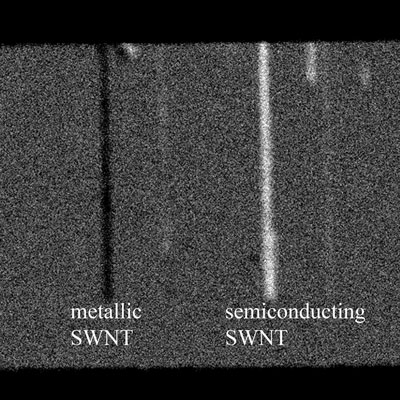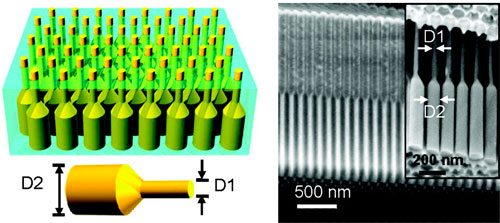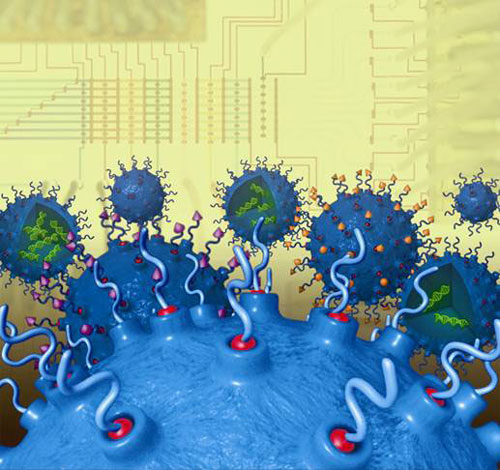The nanoelectronics research centre imec and Peira, a Belgium-based manufacturer of pharmaceutical and chemical research instruments, jointly developed an innovative slice-tilting instrument for in-vitro research on brain tissue. The new tool enables long-term studying of brain cultures through electronic stimulation and read-out, essential in getting insight into the functioning of the brain.
Nov 17th, 2010
Read more
Seven companies reported using six nanomaterials in response to a voluntary information call in 2008 by Australia's National Industrial Notification and Assessment Scheme (NICNAS), in contrast to 22 companies reporting on 21 types of nanomaterial two years earlier.
Nov 17th, 2010
Read more
Friends of the Earth has released a new report that tries to debunk industry promises that nanotechnology offers solutions to our most pressing environmental problems, including climate change.
Nov 17th, 2010
Read more
A new report, 'Nanotechnology Research Directions for Societal Needs in 2020' outlines the foundational knowledge and infrastructure development in the last decade, the current $15 billion in R+D programs underpinning about $250 billion of products incorporating nanoscale components in the world in 2009, and the likely evolution towards a general purpose technology by 2020.
Nov 17th, 2010
Read more
Recent research by a team of researchers from China, led by Dr. Nan Yao, explored the effects of nanoparticles on plant cells.
Nov 16th, 2010
Read more
Because environmental and health information on carbon nanotubes is incomplete and sometimes conflicting, an 'anticipatory governance' approach to the technology is needed, according to Mark Philbrick, post-doctoral researcher at the Center of Integrated Nanomechanical Systems at the University of California, Berkeley.
Nov 16th, 2010
Read more
 DNA is an outstanding nanoscale building material, as researchers led by Ned Seeman discovered thirty years ago. Seeman and his colleagues at the New York University have now used cross-shaped DNA tiles to produce an amazingly large grid structure that resembles woven fabric.
DNA is an outstanding nanoscale building material, as researchers led by Ned Seeman discovered thirty years ago. Seeman and his colleagues at the New York University have now used cross-shaped DNA tiles to produce an amazingly large grid structure that resembles woven fabric.
Nov 16th, 2010
Read more
 Researchers have demonstrated a new imaging tool for rapidly screening structures called single-wall carbon nanotubes, possibly hastening their use in creating a new class of computers and electronics that are faster and consume less power than today's.
Researchers have demonstrated a new imaging tool for rapidly screening structures called single-wall carbon nanotubes, possibly hastening their use in creating a new class of computers and electronics that are faster and consume less power than today's.
Nov 16th, 2010
Read more
 Researchers were able to produce nanopillars that absorb light as well or even better than commercial thin-film solar cells, using far less semiconductor material and without the need for anti-reflective coating.
Researchers were able to produce nanopillars that absorb light as well or even better than commercial thin-film solar cells, using far less semiconductor material and without the need for anti-reflective coating.
Nov 16th, 2010
Read more
In einem Positionspapier zum verantwortungsvollen Umgang mit Nanomaterialien (greift die DGUV die Empfehlungen der Nanokommission auf und legt ihre Handlungsfelder fuer zielgerichtete Praeventionsaktivitaeten fest. Dabei empfiehlt es sich, den Arbeitsschutzgedanken bereits bei der Etablierung von Nanotechnologien in den Unternehmen zu verankern.
Nov 16th, 2010
Read more
Risoe Energy Report 9 lists a wide range of energy technologies in the market with low or no emissions of greenhouse gases, describing how several of these will be made commercially available in the next decades.
Nov 16th, 2010
Read more
From May 17 to May 19, 2011, at Moscow International Forum MetrolExpo-2011 will be held under the motto 'Measurements in science and technology a bridge to innovation', devoted to World Metrology Day.
Nov 16th, 2010
Read more
Collaborations involve three of Japan's leading educational and technological institutions.
Nov 16th, 2010
Read more
While our direct knowledge of black holes in the universe is limited to what we can observe from thousands or millions of light years away, a team of Chinese physicists has proposed a simple way to design an artificial electromagnetic (EM) black hole in the laboratory.
Nov 16th, 2010
Read more
In a move that holds great significance for the semiconductor industry, a team of researchers has created an alternative to conventional logic gates, demonstrated them in silicon, and dubbed them 'chaogates'. Simply put, they used chaotic patterns to encode and manipulate inputs to produce a desired output.
Nov 16th, 2010
Read more
 New stamp-sized microchip enables low-cost screening of a library of artificial viruses.
New stamp-sized microchip enables low-cost screening of a library of artificial viruses.
Nov 16th, 2010
Read more





 Subscribe to our Nanotechnology News feed
Subscribe to our Nanotechnology News feed